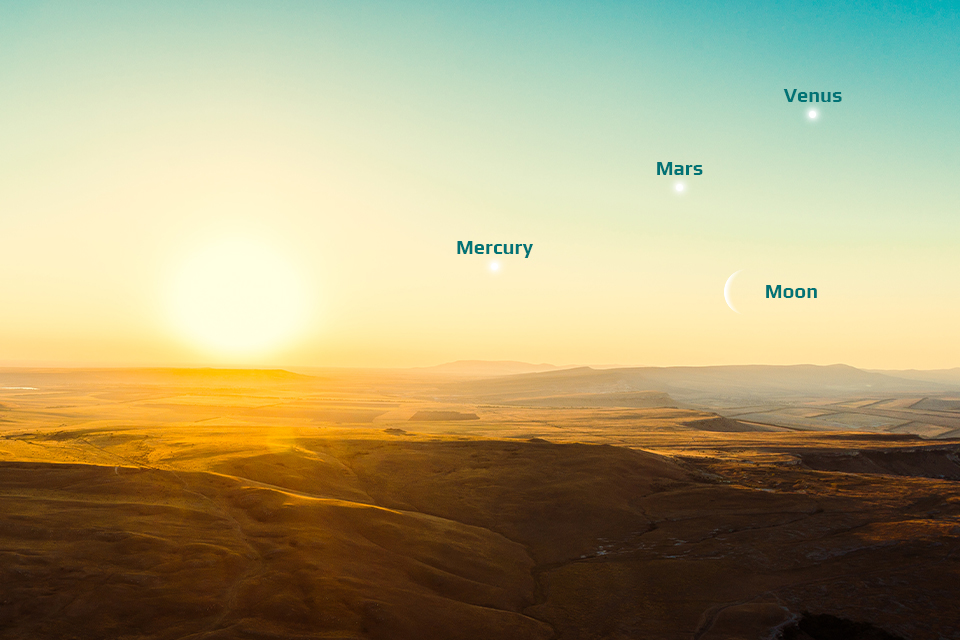We see the Earth’s orbit around the Sun as the movement of the latter among the stars in a large circle of the celestial sphere — the ecliptic. The Moon and large planets are also moving near it. Sometimes there are mutual approaches between them (astronomers call them “conjunctions”). An interesting approach of the Moon with three planets at once will take place on the morning of February 8. Will we be able to see it from the territory of Ukraine?
On January 27-28, Mercury approached Mars quite closely. Since then, these celestial bodies have already noticeably “diverged”, but bright Venus is gradually approaching them from the western direction. On February 7, these “three” planets, located in a sector about 15° in size, will be overtaken by the Moon in the form of a thin sickle, barely visible against the background of morning twilight. First, it will pass 6° south of Venus, and a day later — 5° south of Mars.

The problem is that in February-May, the ecliptic in the morning sky in our latitudes is tilted to the horizon at a slight angle: at this time, the low (southern) zodiac constellations are at the upper culmination. Therefore, all the planets located west of the Sun have a lower declination, and therefore rise not much earlier than it, and sometimes even later. On February 8, at the latitude of Kyiv, Mars will rise above the horizon just 35 minutes before the Moon, and after another 15 minutes the upper edge of the solar disk will rise. The conditions for observing Mercury (which will approach the Moon on February 9) will be much worse: its rise will be ahead of the solar one by only 20 minutes. Considering that the near-horizon air layer is the least transparent and at an altitude of less than 3°, we can actually see only the brightest objects.
On February 10, there will be a new moon (that is, the Moon will be in the sky only 4° from the Sun), marking the beginning of the new year according to the Chinese calendar. The very next day, our natural satellite, from the point of view of ground observers, will get closer to Saturn. However, when evening falls in Ukraine on February 11, the angular distance between the planet and the thin crescent moon will already increase to 8°. It will be quite difficult to see them against the background of evening twilight, given that the elongation of Saturn on this day will be only 15°. Near Neptune, the only large planet that cannot be seen with the naked eye under any circumstances, the Moon will pass on February 12.

The most picturesque will be the conjunction of the Moon with Jupiter on February 15. As in the case of Saturn and Neptune, the smallest apparent distance between them is expected during the day, and by the time the Sun sets, they will have diverged by 5°. But all the same, the sight of a bright planet and a nearby lunar disk, illuminated by almost half, is worth trying to see. Finally, on the same day, almost at midnight, the Moon will approach 3° to Uranus and soon hide behind the horizon with it. This concludes the sequence of February connections of our natural satellite with large planets.
Earlier we wrote about what other interesting events will take place in the sky in February.
Follow us on Twitter to get the most interesting space news in time
https://twitter.com/ust_magazine


